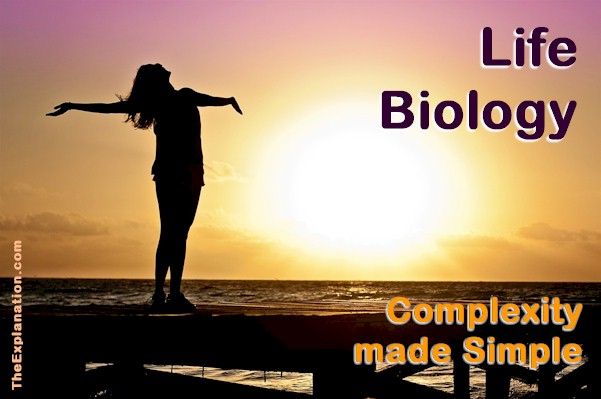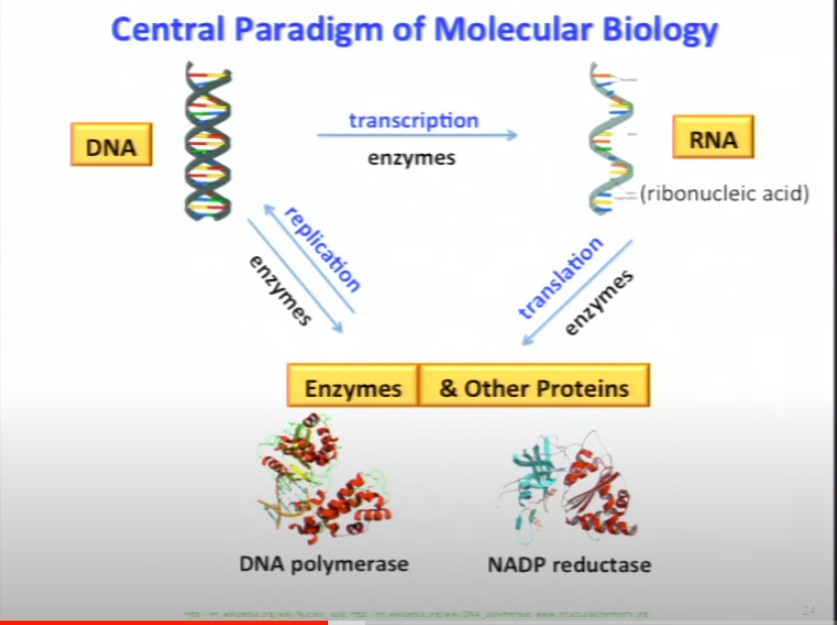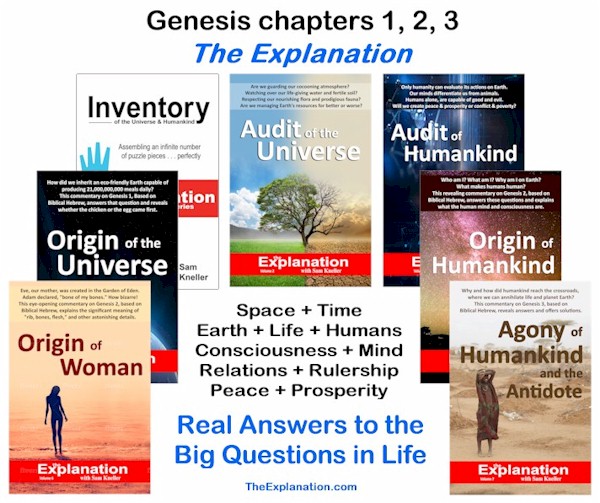Life Biology is stunningly complex. Beautifully organized, interconnected processes run your body 24/7/365. How did this happen?

Rocks to Cells, the stuff of Life Biology
In the last episode, I left you with an enigma. How to transform rocks into cells, geochemistry to biochemistry. Well, science hasn’t found a solution yet to reach life biology. Listen to this very lucid presentation from Dr. Nita Sahai about the challenges scientists face to accomplish this feat.
(Mind-Body Problem Solved, Chapter 3)
Let me note what I consider a few key points on the road to life biology.
4:20 Which came first genes or metabolism?
5:40 We can’t do reactions of the 1st life from minerals, only come up with plausible ideas. Everything is taken with a grain of salt.
19:45 What came first? What came second? it’s hard to pin down to a root.
21:05 Minimum life needs 1. Membrane 2. Heritable and mutable (for evolution) 3. Metabolic cycles.
26:25 The main problem. You have the genetic molecule, DNA, and it produces enzymes, but the enzymes are needed to produce the DNA. Which came first? Chicken or the egg? Actually, it’s more complicated than that because DNA first transcribes to RNA. There’s this very complex process in modern life, DNA > RNA > proteins, all involving enzymes.
Below is a diagram from Dr. Sahai’s excellent presentation illustrating the interactions between these various individual chemical pieces that assemble perfectly in life biology.

Once again, this transformation of geochemistry to biochemistry, life biology, like fine-tuning of the Universe doesn’t prove anything. You can consider them as just two bricks of interesting evidence. Science hasn’t yet figured out the how and will never know the why. At least, realize there are some missing links.
Processes in Processes
Let’s move on to another brain-teaser related to life biology. The first book in The Explanation series is Inventory of the Universe. A journey from the vastness of outer space to the minuteness of the quark. From the physics of elementary particles to the psychology of the human mind. A portrayal of our known universal environment.
A 4* review of the book at Goodreads said. “This is like an updated and longer, “View from a height” by Isaac Asimov. An overview of the world and science from physics to biology…” I have to admit, it’s nice to be compared to Isaac Asimov. His book covered 17 essays dealing with biology / chemistry / physics. However, the reviewer missed the essential, or I wasn’t clear enough in the book.
Here’s the point I emphasized on numerous occasions:
In Part 7 I wrote about Human Life “To speak in terms such as function and to refer to sheer numbers is inadequate to describe the processes that are performing like a battalion of flying trapeze artists in total sync. In our bodies, in human life, in flora, in fauna, and, indeed, in the Universe. The full gamut that I’m doing my best to help us picture and imagine is breathtaking and awe-inspiring.”
Regarding the human body, this is life biology “Hundreds, thousands, and millions of timely processes are taking place night and day. This is the ultimate in chronobiology: the notion of very complex biological procedures and the clock being in the right place at just the right split second. It’s so much more than simply mixing a few chemical elements together. Timing, the instantaneous coordination of umpteen intricate systems, is a decisive ingredient we cannot omit.”
I dare you to define life. Scientists have synthesized certain DNA molecules mixed, matched, extracted, and implanted them to make a living entity. This has been done with bacteria that beat like in a heartbeat. Under such circumstances, we could say this organism is living, but it didn’t last, so life is much more than bringing elements together and having them beat the right beat. This has nothing to do with their tremendous biological breakthrough. But we need at least two additional functions.
1. Sustainability
An integral part of life is its capacity to sustain itself, the ability to continue to live. The organism must have access to and assimilate the correct fuel, the proper variety of food year-round. It then has to break down that food into chunks, transform it into energy, metabolism, digest and convert it to chemicals to run its machinery, and produce extra energy to accomplish external activities. Not to mention, it must also eliminate waste products.
2. Reproduction
Life biology must reproduce itself. It must bring forth new life, of and by itself, with no external help in manipulating the elements that are a part of the original living entity. We’re talking about a system of reproduction, be it asexual or sexual, but it must be a system permitting a second and third generation. Otherwise, it’s not life. In that case, it lasts for a certain period and becomes extinct, game over.
When the organism reproduces, depending on its complexity, it needs to copy itself, but not exactly. It needs some plasticity, otherwise, we’d have robotic dogs with robotic humans. Not only no variety, but the problems that would arise from consanguinity and genetic disorders would put an end to life.
If it can’t reproduce regularly and develop a self-sustaining population, then we’d have to recreate life by assembling all the elements again and again.
From chemicals to life biology
DNA comprises five elements: oxygen, hydrogen, nitrogen, carbon, and phosphorus. The life biology cycle occurs in each of those 100 trillion cells of your body. Especially  amino acids and proteins, which are key building blocks. In a very simplistic way, this is the virtuous circle of chemical life: 5 elements > 20/100 amino acids > 500 / 1 000 000 proteins > DNA.
amino acids and proteins, which are key building blocks. In a very simplistic way, this is the virtuous circle of chemical life: 5 elements > 20/100 amino acids > 500 / 1 000 000 proteins > DNA.
We don’t know exactly how many amino acids or proteins there really are in the makeup of our bodies, nor exactly how many are used for what purpose. The above are estimates. Notice that in this circle (in the image) IF you start with the FIVE elements and follow the circular path, it gets more complex as you proceed but after the most complex, DNA, it immediately leads back to the simplest, the FIVE elements.
This is exactly what happens in your body. In a nutshell, schematically, that’s what digestion is: breaking down the food and water we intake. We might not think about digestion this way but, through multiple processes, your body is taking apart, breaking down, metabolizing your food into molecules and atoms, then rebuilding, synthesizing those basic elements into DNA via the amino acids and proteins.
This is a VERY simplistic representation of life biology. The point is to explain chemical life is a virtuous, never stopping circle.
You cannot start anywhere in the circle, go a certain distance, then end somewhere and say this is life. Life biology is the entire circle. It’s not the chicken OR the egg, it’s the chicken AND the egg with no break, and no outside intervention. All or nothing. That’s life.
That’s the scientific, practical approach. But we really need to meditate on the biodiversity of life to appreciate the complexity of its beauty. Look at the pictures or read a book like Zoology by the Smithsonian Institution. Oceanology, the secrets of the Seas revealed. Micro Life: Miracles of the Miniature World, find out all about the unique and beautiful kingdoms of life at a microscopic scale and how every organism meets the challenges of survival, no matter its size.
Life biology is a blaze of amazement. In the Epilogue of Inventory of the Universe, I wrote. “All the processes of each aspect of our environment fit together. For example, see the nitrogen cycle, the water cycle, and butterflies, wasps, and bees pollinating flowers and plants.
These processes impact, intermingle and create an interface so that other processes can express themselves. We live in a fully integrated, interdependent environment with no missing or redundant parts.”
Are the chicken AND the egg evidence of something we’re missing?
Dig Deeper into The Explanation
Online Study Courses to Uncover the Mystery of Adam and Eve’s Nakedness… with no fuss. Free video mini-course revealing the God-intended meaning of Scripture via Biblical Hebrew. It’s so easy, it’ll blow you away. Join now and add new motivation to your Bible study.
Join The Explanation Newsletter to stay informed of updates. and future events. No obligations, total privacy, unsubscribe anytime, if you want.
The Explanation series of seven books. Free to read online or purchase these valuable commentaries on Genesis 1-3 from your favorite book outlet. E-book and paperback formats are available. Use this link to see the details of each book and buy from your favorite store.

Since you read all the way to here… you liked it. Please use the Social Network links just below to share this information from The Explanation, Life Biology. From Rocks to Cells, Sublime Simple Complexity



Let’s Connect!